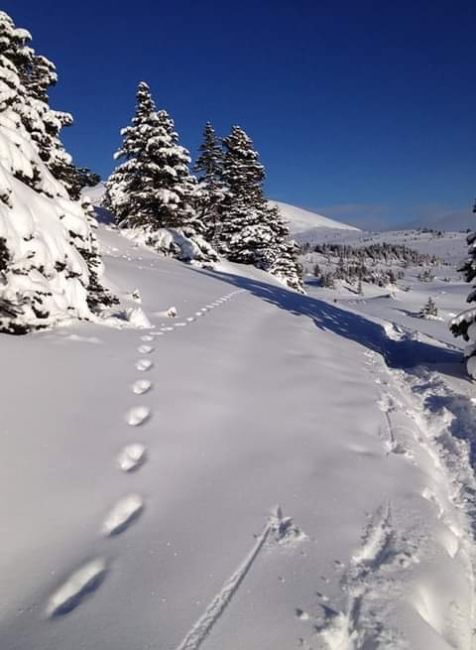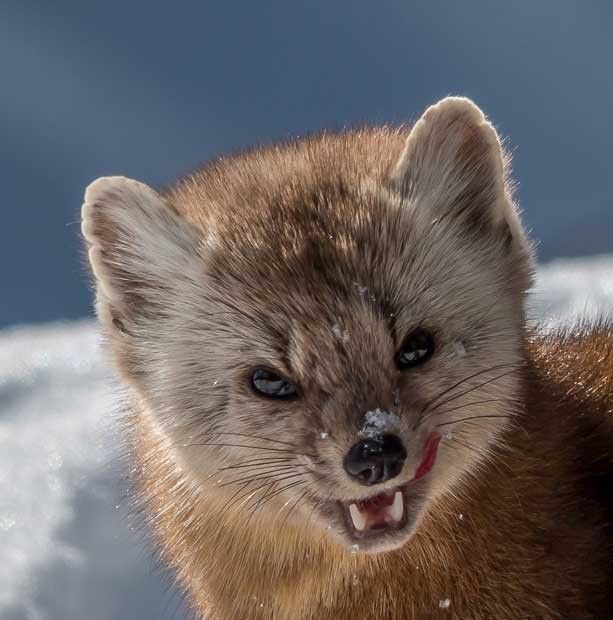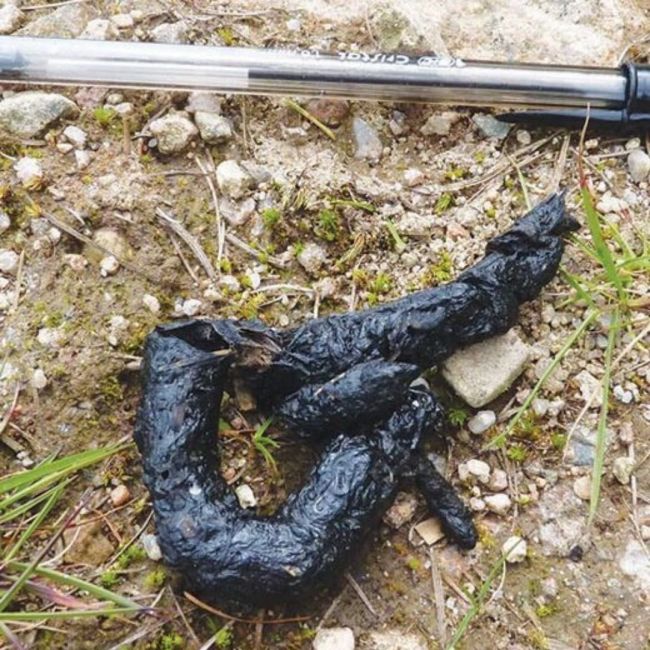“What are those tracks?” a question often asked on our Snowshoe on Top of the World trips at Sunshine Village. My reply is, “It’s a predator, only about the size of a small housecat, 1 kg/2.5 lbs, that leaps across the snow like a slinky toy, with the front and hind feet meeting in the same track.” Few guess that the tracks are from a Pine marten, aka American Sable to furriers, from the Mustilidae/weasel family.

When shown a picture of a Pine marten, the comments are always, “It’s so cute!”, but this cutie has few foes, except for fisher, lynx and great horned owls! Their sharp teeth combined with amazing jaw strength, are used to chomp down on primarily protein rich rodents (red backed voles a staple) and up where we snowshoe, the snowshoe hare. Although weasels aren’t known to be tree climbers, in summer Pine martens will climb trees to hunt squirrels and sleeping birds. They’ll also eat bugs, grouse and berries on the ground.

Besides climbing trees for food, Pine martens will climb trees for their daytime nap in a tree hollow after their nocturnal hunting forays. Sometimes they’ll take over a squirrel midden, a den underground, especially in winter since its much warmer there.
Pine martens are not sociable animals, except during mating season in July and August. A fellow guide told of hearing yowling and hissing under a backcountry cabin one night, keeping them awake, only to learn it was Pine martens mating! The blastocyst (early embryo) is delayed in implanting to the womb until at least the following February, with 2-4 young born in March or April in a leaf-lined tree cavity or among rocks. Just one litter are born a year, blind until day 39, weaned at 6 weeks and converse with mom by “twittering”, but not the social media kind. A group of Pine marten is called a “richness”, which would be mom with the kids, since otherwise unsociable with their kind.
Communication with other Pine martens is through abdominal and anal scent glands to mark their territories, ranging from 1km (females) to 5km (males). What we notice are their visual markings of scat piles in the most obvious and usually the highest point on a trail, or on a snowshoe trail. Pine martens may battle over territory where they’ll back up to each other and kick with their hind feet, like kick boxing! Once in awhile they’ll go head-to-head with a gruesome result!

The next time you see duo tracks in the snow, or a skinny scat pile in the middle of a trail, you’ll know you’re in the territory of the Canadian Rockies most prevalent predator, the Pine marten!
Kristi Beetch
AGMG Day Hiking and Winter Travel Guide, IGA Master and Professional Interpreter